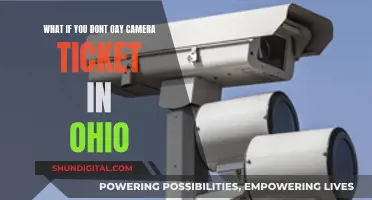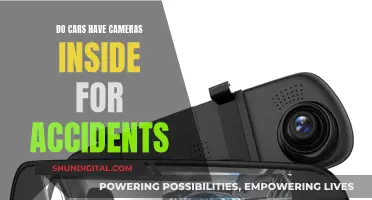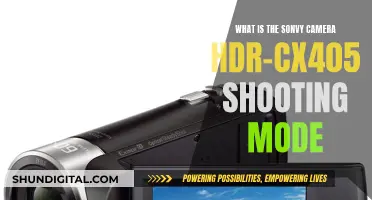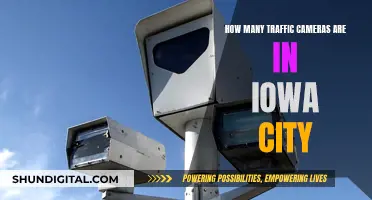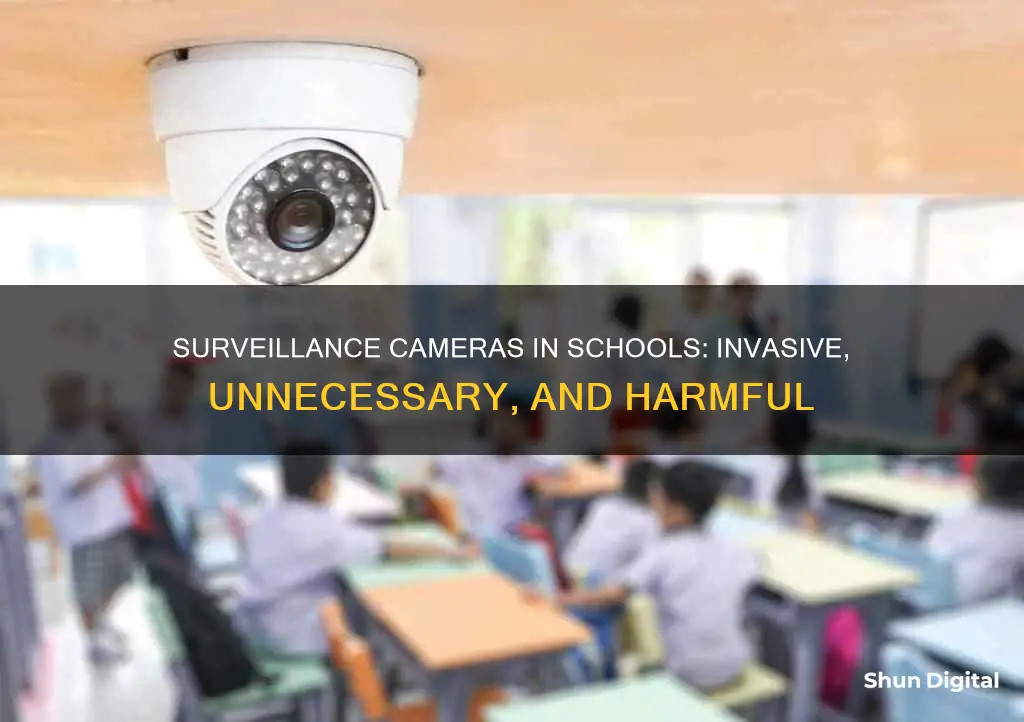
Surveillance cameras in schools have been a topic of debate for years, with some arguing that they are necessary to enhance school security and prevent crimes, while others raise concerns about privacy invasion and the creation of a hostile environment. While surveillance cameras can deter theft, mischief, and vandalism, as well as help stop bullying and protect both teachers and students, there are also negative consequences to their use. One of the main drawbacks is the invasion of privacy, as cameras can make students and teachers feel like they are being spied on, creating a sense of mistrust and apprehension. Additionally, the presence of surveillance cameras can lead to a negative view of the school environment and a feeling of alienation for some students. Furthermore, the cost of purchasing, installing, and maintaining these camera systems can be high, and there is a potential for hidden cameras to be installed without the knowledge of those being monitored, further exacerbating privacy concerns.
| Characteristics | Values |
|---|---|
| Creates a Hostile Environment | Surveillance cameras in schools can create a hostile environment, making students and teachers feel like they are not trusted by the administration. |
| Invasion of Privacy | The presence of surveillance cameras in schools can be seen as an invasion of privacy for both students and teachers, especially if cameras are hidden or not clearly visible. |
| Negative Impact on Academic Achievement | Studies have shown that heavy surveillance in schools can hinder academic achievement and negatively impact students' math scores. |
| Increased Suspensions and Punishment | Higher surveillance in schools can lead to increased suspensions and punishments for minor infractions, disproportionately affecting Black students and contributing to a "school to prison pipeline". |
| Negative Impact on School Culture | The presence of surveillance cameras can shift the focus away from academic success and school culture, impacting the overall school environment. |
| High Costs | The cost of purchasing, installing, monitoring, and maintaining surveillance camera systems can be high, with additional expenses incurred if cameras are vandalized or stolen. |
What You'll Learn

Invasion of privacy
The presence of surveillance cameras in schools can be seen as an invasion of privacy for students and teachers alike. The constant surveillance of students and teachers raises concerns about the invasion of privacy. Cameras in classrooms can make students and teachers feel like they are being spied on, creating feelings of apprehension and resentment, and even a lack of trust between the school and its students.
In the case of teachers, surveillance cameras can be seen as threatening their professional freedom and an attack on their right to privacy. Teachers may feel anxious about being filmed all day, especially if they are uncomfortable with being on camera. This can lead to a feeling of alienation and a negative view of the school environment.
The placement of cameras is also crucial. While cameras in common areas such as hallways and cafeterias may be justified for security reasons, installing cameras in areas where privacy is expected, such as restrooms, locker rooms, and employee lounges, is an invasion of privacy.
Furthermore, the potential for misuse of footage is a valid concern. There may be worries about footage being accessed inappropriately or used for unintended purposes, such as in the case of a dean who shared footage of two girls kissing in the hallway with one of the girl's parents.
To respect privacy, schools should install cameras in areas without a reasonable expectation of privacy and ensure that camera placement is visible and complies with state laws. Clear policies and education about the purpose of cameras can also help alleviate concerns and build trust.
The Evolution of Cameras: From Concept to Creation
You may want to see also

Creates a hostile environment
The presence of surveillance cameras in schools can create a hostile environment, fostering a sense of mistrust and alienation among students and staff. Here are some key points to consider:
Mistrust and Apprehension
The installation of surveillance cameras in schools can lead to a sense of mistrust between the school administration and the students and teachers. Those under surveillance may feel that the school authorities do not trust them and are constantly monitoring their actions. This can create a sense of apprehension and unease, impacting the overall school environment.
Invasion of Privacy
Teachers may feel that their privacy is being invaded, especially if they are anxious about being observed throughout the day. They may feel that their professional freedom is being threatened and that their right to privacy is being compromised. This can lead to feelings of resentment and a negative impact on teacher morale and job satisfaction.
Negative Impact on Student Wellbeing
Students may experience a negative impact on their wellbeing due to the presence of surveillance cameras. They may feel a lack of trust from the school administration and a sense of being constantly watched and judged. This can create an uncomfortable and stressful environment for students, potentially affecting their mental health and overall school experience.
Authoritarian Atmosphere
Some educators believe that surveillance cameras in schools contribute to an authoritarian atmosphere. This type of environment may negatively impact students' sense of freedom and autonomy, fostering a sense of apprehension and unease. It may also hinder the development of trust and positive relationships between students and school authorities.
Impact on Teacher-Student Relationships
The presence of surveillance cameras can potentially affect the dynamic between teachers and students. A sense of mistrust or the feeling of being constantly monitored may impact the openness and comfort level in the classroom. This could hinder effective teaching and learning, as well as the development of positive teacher-student relationships, which are crucial for a supportive and engaging educational environment.
In conclusion, while the intention behind installing surveillance cameras in schools may be to enhance safety and security, it is important to consider the potential negative consequences on the school environment. The creation of a hostile and authoritarian atmosphere, along with feelings of mistrust and invasion of privacy, can have detrimental effects on the overall wellbeing and educational experience of both students and teachers.
Mastering Focus: Canon 500D Tips and Tricks
You may want to see also

Hinders academic achievement
Surveillance cameras in schools have been a topic of debate, with some arguing that they enhance security and others concerned about privacy invasion. While the intention behind installing cameras may be to ensure student safety, there are concerns that they may hinder academic achievement. Here are some reasons why surveillance cameras in schools could negatively impact academic achievement:
Negative Impact on Student Wellbeing
Students who experience surveillance cameras in classrooms report feeling a lack of trust between themselves and the school. This sense of mistrust and alienation can negatively affect students' mental health and overall wellbeing. Such negative feelings can hinder students' motivation and engagement in their academic pursuits, potentially leading to lower academic achievement.
Authoritarian School Environment
The presence of surveillance cameras can contribute to an authoritarian school environment, where students feel they are being constantly monitored and punished for minor infractions. This can create a sense of apprehension and resentment among students, impacting their overall school experience and potentially hindering their academic progress.
Negative Impact on Teacher-Student Relationship
Surveillance cameras can also affect the dynamic between teachers and students. Teachers may feel that their privacy and professional freedom are being infringed upon, leading to decreased morale and job satisfaction. This, in turn, could impact their teaching effectiveness and the quality of their interactions with students, potentially hindering the academic achievement of their students.
Misplaced Focus on Punishment
While the primary goal of surveillance cameras is to enhance safety, they can inadvertently shift the focus of the school administration towards punishment. As noted by researchers from Johns Hopkins University and Washington University in St. Louis, surveillance measures may increase the capacity to identify and punish students for minor offenses. This can lead to a higher rate of suspensions, particularly among certain demographic groups, which in turn can negatively impact academic achievement.
Negative Impact on School Culture
The presence of surveillance cameras can take away from other important aspects of school culture, such as academic success and student well-being. When schools prioritize safety and security above all else, it can come at the cost of creating a nurturing and supportive learning environment. This shift in focus may ultimately hinder students' academic achievement and overall development.
Guide Mode: Your Camera's Helper
You may want to see also

High cost
The financial costs of installing and maintaining surveillance cameras in schools are significant. The cost of a school security camera system depends on the number and quality of cameras required. Basic security cameras with 1080P/2MP resolution start at around $100, while more advanced models with higher resolution and zoom capabilities can cost up to $2,000 each. In addition to the cameras themselves, there are also software setup costs and annual fees to consider. For example, one Ohio school district spent over $60,000 on cameras over five years, plus $22,500 in software setup and annual fees of over $28,000.
The total cost of a school security camera system can quickly add up, especially for larger schools or districts with multiple campuses. The cost of purchasing, installing, and maintaining a large number of cameras can be a significant financial burden for schools, especially those with limited budgets.
In addition to the upfront cost of the cameras themselves, there are also ongoing costs associated with storing and managing the footage. Schools need to invest in sufficient storage capacity to retain footage for a certain period, and they may also need to purchase additional software or equipment to manage and review the footage effectively.
Furthermore, as technology advances, schools may need to upgrade their camera systems periodically to ensure they have the latest features and capabilities. This can result in a continuous cycle of expenses, as schools strive to keep up with the latest security technology.
The high cost of surveillance cameras in schools can divert resources away from other important areas, such as academic programs, teacher training, or student support services. It is essential for schools to carefully consider the financial implications of implementing surveillance camera systems and to weigh the potential benefits against the significant costs involved.
Reolink Cameras: Made in China?
You may want to see also

Mistrust
The presence of surveillance cameras in schools can create an atmosphere of mistrust between students, teachers, and administrators. Students may feel that the school does not trust them and that they are being spied on, leading to feelings of apprehension and resentment. This can negatively impact their sense of safety and well-being in the school environment.
Teachers may also experience similar sentiments of being monitored and invaded, which can affect their professional freedom and sense of privacy. They may feel anxious about being constantly watched and judged, especially if they are already concerned about being falsely accused of misconduct. This can contribute to a hostile work environment and negatively impact their job satisfaction and performance.
The use of surveillance cameras can also lead to a "guilty until proven innocent" attitude within the school community. Students and teachers may feel that they are presumed guilty of wrongdoing and that the cameras are primarily used for punishment rather than prevention. This can further contribute to feelings of mistrust and resentment.
Additionally, the presence of cameras may shift the focus away from building positive relationships and addressing the underlying causes of any issues. Instead of fostering an environment of mutual respect and open communication, the emphasis on surveillance can create a sense of distrust and alienation.
It is important to consider the potential impact on the relationship between students, teachers, and administrators when deciding whether to implement surveillance cameras in schools. While safety and security are paramount, it is crucial to strike a balance that does not compromise the trust and well-being of the school community.
Where Are Dragon Touch Cameras Manufactured?
You may want to see also
Frequently asked questions
Surveillance cameras in schools can hinder academic achievement by creating a feeling of alienation for students and fostering a negative view of the school environment.
Surveillance cameras can create an atmosphere of mistrust and a lack of safety in a school environment. Students may feel that the school doesn't trust them, leading to resentment and apprehension.
Surveillance cameras in schools raise legal and privacy concerns, especially if they are installed irresponsibly, such as using hidden cameras or cameras that are not clearly visible. Students and teachers may worry about the invasion of their personal privacy.
Surveillance cameras can lead to a "guilty until proven innocent" attitude and create an authoritarian atmosphere in schools. Additionally, there are significant financial costs associated with purchasing, installing, and maintaining surveillance camera systems.


